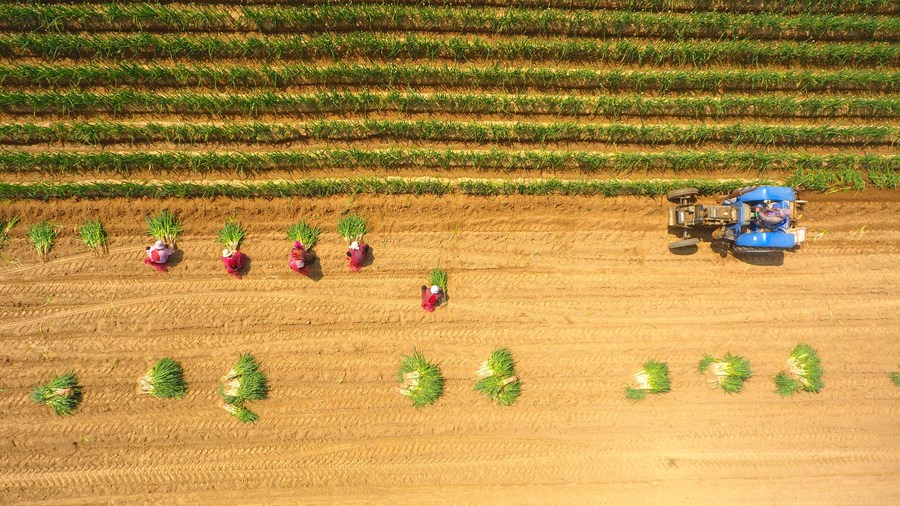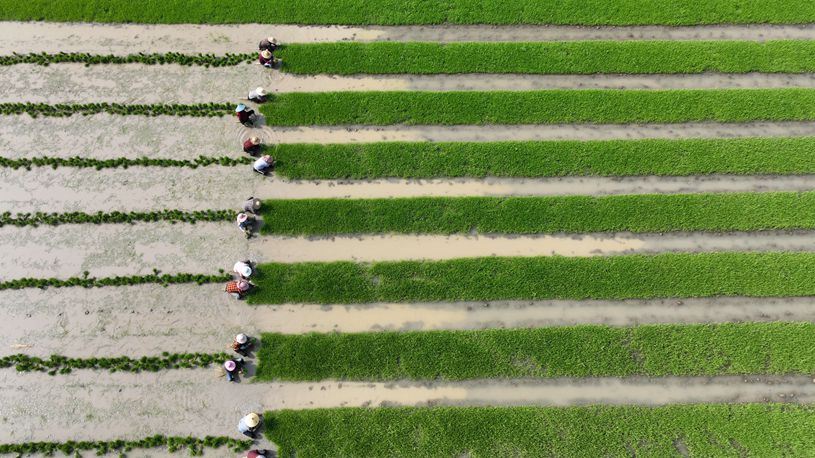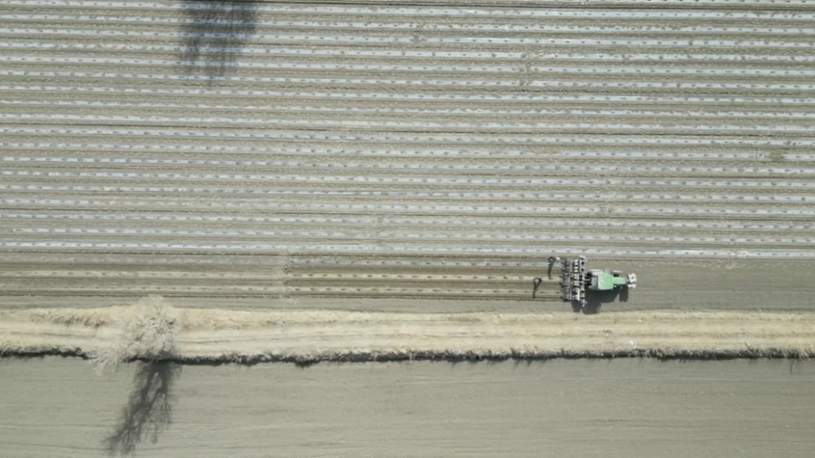
Aerial photo shows farmers working in the field in Liaocheng City, east China's Shandong Province on April 19, 2022. (Photo by Zhao Yuguo/Xinhua)
JINAN, April 20 (Xinhua) -- With the start of China's traditional solar term Grain Rain, or Guyu, agricultural activities are kicking into high gear across the country.
Grain Rain, or Rain of Millet, began on Thursday. It is the sixth of the 24 traditional Chinese solar terms, with each spanning about 15 days based on the position of the sun in the zodiac. It is the last solar term in spring and signifies the onset of the rainy season, which is considered a favorable time for planting and the growth of crops.
Today, the 24 solar terms system remains a significant guide for Chinese farmers in their agricultural work. The system is on the United Nations Educational, Scientific, and Cultural Organization (UNESCO) Representative List of the Intangible Cultural Heritage of Humanity.
In Jiaxiang County, east China's Shandong Province, more than 50 million sweet potato seedlings were transported to neighboring provinces, such as Anhui and Henan, for planting.
Li Zhaoshuai, head of a local cooperative, said that during the Grain Rain period, the temperature will rise, and precipitation will increase significantly. This presents an ideal window for planting sweet potatoes.
Chinese people often say that farmers would become busy when Grain Rain comes.
In Zoucheng City, Shandong, agricultural technicians were organized to visit croplands to offer advice on the scientific management of wheat.
Chinese traditions related to Grain Rain include eating toon tree leaves mingled with scrambled eggs, drinking freshly brewed tea, and appreciating flowers.
The day that marks the beginning of Grain Rain was selected as the Chinese Language Day of the U.N. to pay attribute to Cangjie, a legendary figure in ancient China said to be the inventor of Chinese characters. Legend has it that when he invented the characters, Heaven was moved and rained millet for him. ■












